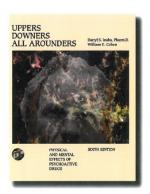|
This section contains 1,484 words (approx. 5 pages at 300 words per page) |

|
Compounds in some plants can have an overwhelming effect on the central nervous system. Plants containing those compounds are thus known as mind-altering (active) or psychoactive plants. Their effects may be separated into hallucinogenic, stimulating, or depressing properties depending on the plant used and the present compounds, which are usually secondary metabolites. A few plants, however, have major multiple effects based on one or more compounds present, such as tobacco containing nicotine, which can be both stimulating and depressing.
Three points are worth keeping in mind about these plants. First, psychoactive drugs have been used in many cultures throughout human history. Their use has often been highly ritualized (especially true for hallucinogens) and incorporated into religions or mystical ceremonies in such a way that the novice is guided and protected by more experienced members of the ritual. Such practices have tended to minimize the potential for...
|
This section contains 1,484 words (approx. 5 pages at 300 words per page) |

|


